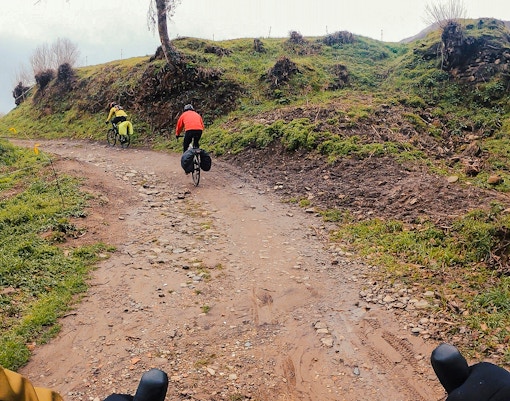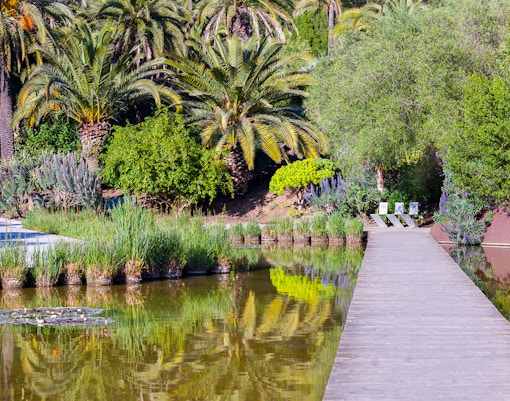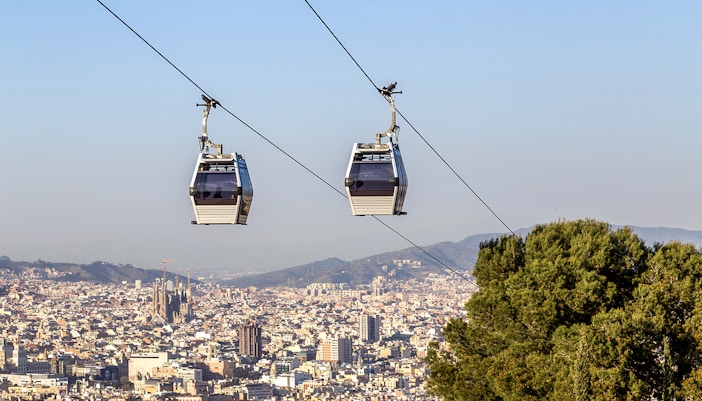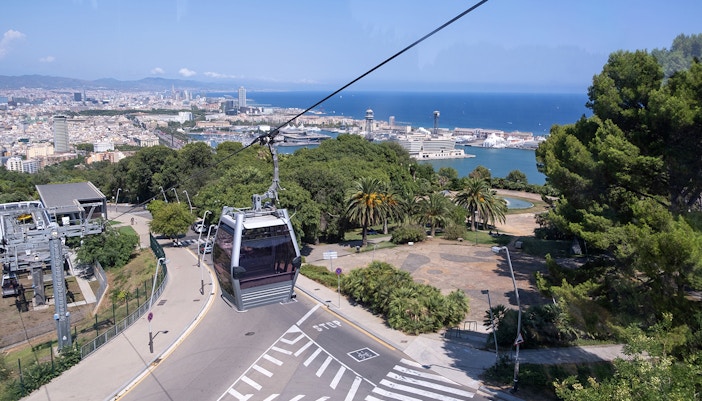Imagine steering a 500-horsepower rocket with turns, each sharper and more unpredictable than the last.
The Montjuïc Cable Car is the best introduction to the Montjuïc Park Circuit. Floating over Montjuïc’s pine-covered hills in an all-glass cabin, as you peek at the circuit from above, you begin to understand what made this circuit so seductive and so feared. The sweeping views of Barcelona’s skyline, the sea glimmering in the distance, and then… the sudden drop of Mirador Corner, where race cars once dove downhill at terrifying speeds.
If you want to trace the outline of this lost circuit, start from the beginning. From up the Montjuïc Cable Car, the track looks like a ribbon tossed across a hillside. But beneath the beauty lies a track that pushed Formula 1 to its breaking point.
Winding through public parks, past the National Art Museum, and alongside the 1929 Olympic pools, the Montjuïc Park Circuit was almost absurdly scenic. Drivers would hurtle past fountains and grand staircases at speeds reaching 300 km/h, with barely a breath of space between them and stone walls or lampposts.
It was thrilling, yes. But also unforgiving. This track scared actual F1 champions. Jackie Stewart, world champion and safety advocate, once called Montjuïc “the most beautiful track I’ve ever driven… and the most terrifying”.




By 1975, the Montjuïc Park Circuit had become as controversial as it was iconic. Drivers had long raised alarms about its safety, and ahead of that year’s Grand Prix, tensions ran high. Makeshift fixes were made to barriers, but the cracks (literal and metaphorical) were already showing.
Midway through the race, a serious crash led to multiple fatalities and injuries.
The race was called off early. Within 72 hours, Formula 1 announced it would never return to Montjuïc. What had once been hailed as the most beautiful street circuit in the world became a solemn turning point in racing history, marking the end of an era and the beginning of a long-overdue safety revolution.
Start your journey at Mirador Station, just off the cable car. From here, descend slowly through the circuit’s most dramatic turns, following the natural slope of the hill. You’ll pass through sections where engines once screamed and cars danced on the edge of traction.
Take your time, pause where you find remnants. Sit by the staircases where crowds once watched legends battle. Touch the railing where Niki Lauda’s scarlet Ferrari brushed the metal in 1974. End at Plaça Espanya, where winners once lifted trophies with hands still trembling from adrenaline.



Yes! Many parts of the original layout are open to pedestrians, especially from Mirador to Plaça Espanya. Look out for surviving barriers, curbstones, and memorials along the way.
The best place to start is Mirador Station via the Montjuïc Cable Car. From there, you can walk the route downhill, tracing the race in reverse with sweeping views.
No, the cable car wasn’t part of the race infrastructure. But it gives a unique aerial view of the track and is the easiest way to reach key vantage points like Mirador Corner.
The 1975 Grand Prix was marred by a tragic accident that claimed several lives. After years of safety concerns, the race was abandoned mid-way, and F1 withdrew from Montjuïc permanently.